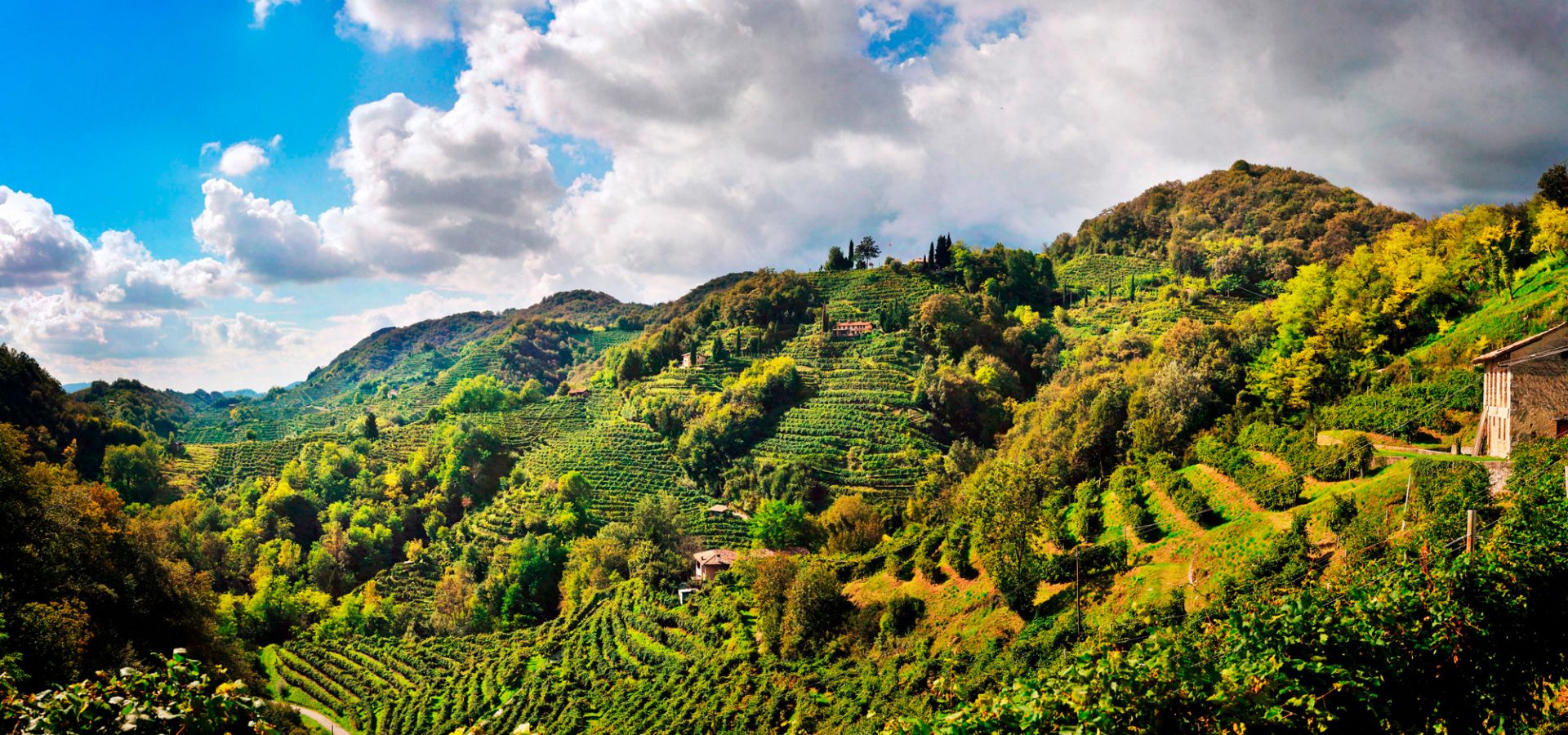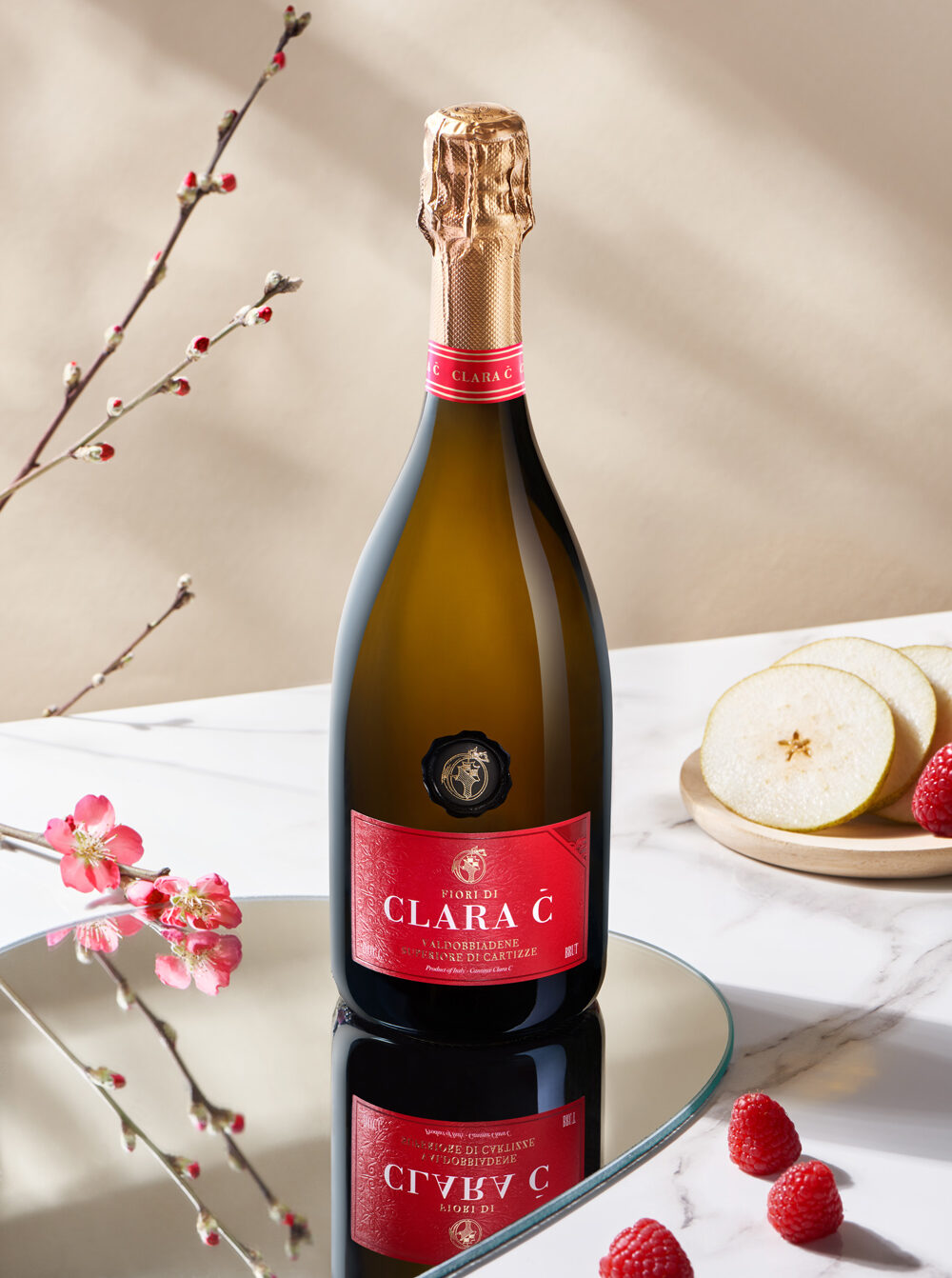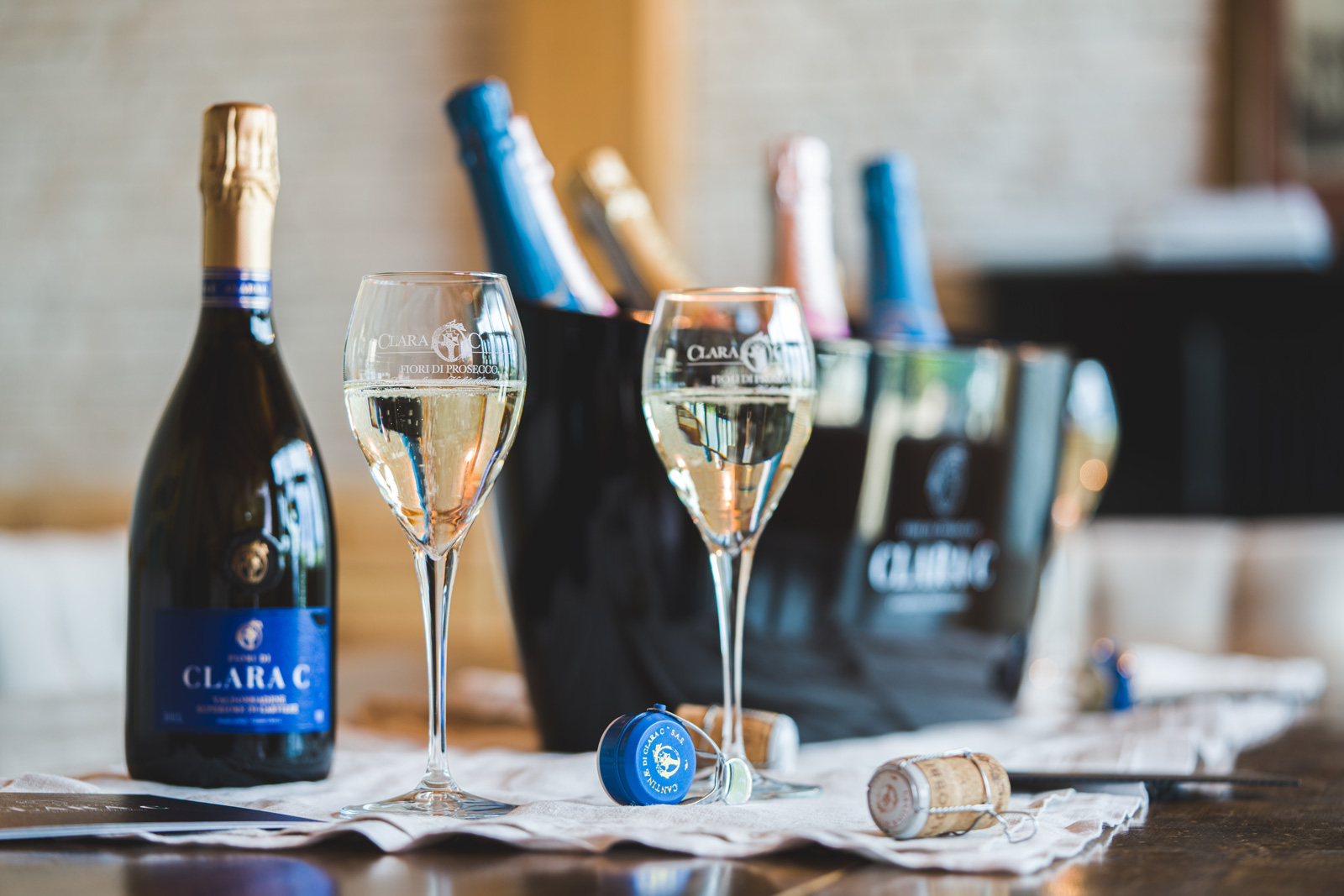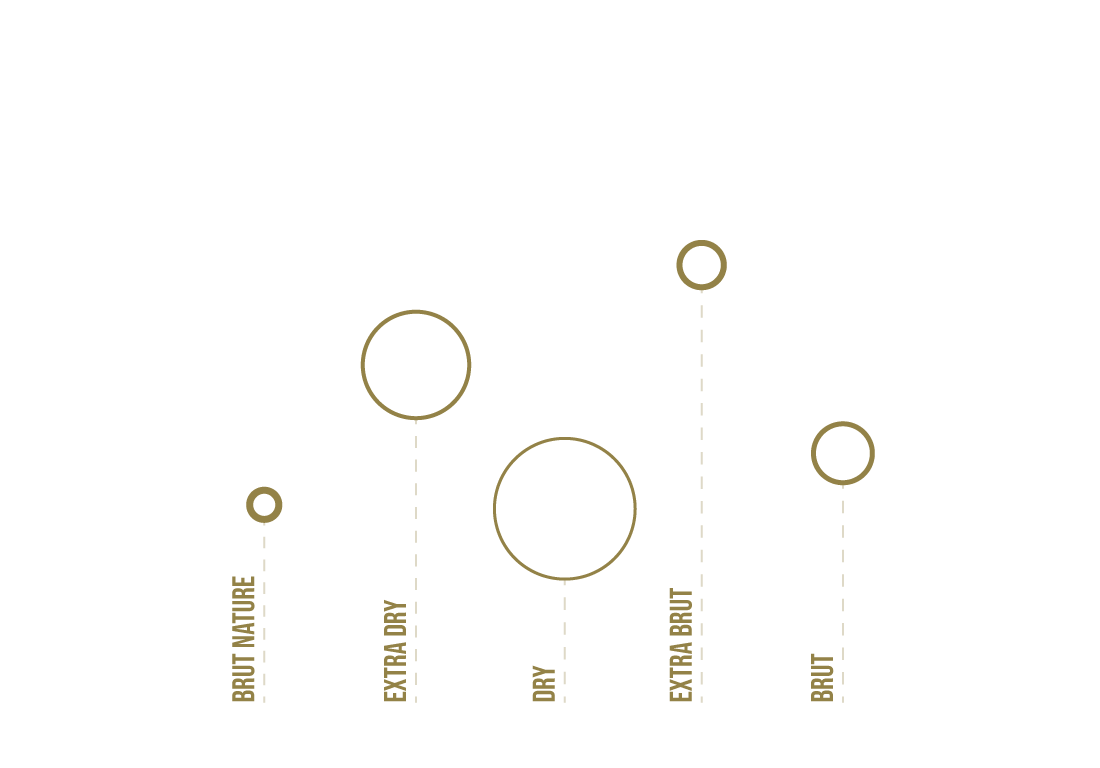
The terroir, our home, Unesco World Heritage
Cantinæ Clara C’ is located in the hills of Conegliano Valdobbiadene, a unique rural territory, nested between Venice and the Dolomites, characterized by the hogbacks: hills with narrow ridged and steep slopes, punctuated by small valleys that the mankind managed to model and cultivate, respecting nature and its vulnerability. An unmistakable landscape featuring a mosaic of terraces, vines and woods, that was officially recognized as UNESCO World Heritagein 2019.
A story of sparklers
Originally, Prosecco was a local a variety that rural families of the area between Conegliano and Valdobbiadene (province of Treviso) used for their own consumption. It was a still wine that tended to naturally develop its sparkling characteristic after a light natural fermentation inside barrels.
In the mid-19th century, Antonio Carpenè Sr (1838-1902), a passionate chemist, enologist and Clara’s great grandfather, started studying the Prosecco grape variety envisaging the production of a sparkling wine. He developed connections with eminent Italian and international chemists and enologists of the time. Thanks to this experience, he contributed to the foundation of the first school of enology in Italy, he experimented and innovated in the field of enological chemistry, also thanks to his collaboration with Pasteur.
In fact, until the 19th century, only one method was known and used to produce sparkling wine: the Classic (champenoise) Method, which required 2 years of refermentation directly in the bottle using yeasts. With this process and in such a long refermentation time, the fresh perfumes typical of Prosecco evanished, depriving the wine of the unique feature of these grapes.
It was then Antonio Carpenè Jr (1913-2010) Clara’s father, who started the industrial production of Prosecco with secondary fermentation inside stainless steel tanks. In the 20th century, such new technology for the production of sparklers became available, and the Carpenè family perfectioned and adapted it for the Prosecco variety (the so-called Carpenè method, then Martinotti method). This innovation opened to a new scenario for the production of sparkling Prosecco and, in the 50s, Antonio Carpenè Jr marked the decisive turning point with the modern and stable Italian method for the production of Prosecco sparklers with secondary fermentation in stainless steel tanks.

The origins of Prosecco
Prosecco is a naturally simple wine, produced with a single grape variety: Glera. The name Glera appeared in the international ampelographic records in 2009, indicating the variety then known as Prosecco. This update was carried out to safeguard the authenticity of Prosecco sparkling wine bottles. Since 2010 Prosecco indicates D.O.C.G. and D.O.C. wines derived from Glera grapes grown in Veneto and Friuli Venezia Giulia.
Historically, the following varieties can be blended with Prosecco, up to a maximum of 15%: Verdiso, Bianchetta Trevigiana, Perera, Glera lunga, Chardonnay, Pinot Bianco, Pinot Grigio and Pinot Nero, fermented in white.
The process starts with the selections of the best grapes for the production of white wine: during this phase, sugar is transformed into alcohol and CO2.
The fermentation phase, where yeasts are active, lasts around 15/20 days at a maximum temperature of 18°C to preserve the aroma and the most delicate perfumes.
Prosecco Tranquillo is the first quality to be bottled, while the Frizzante and Spumante varieties proceed with the second natural fermentation.
The second fermentation is conducted according to the Italian method, also called Martinotti, leaving the wine under pressure, in large stainless steel tanks, to develop the typical bubbles. Towards the end of this process, which lasts around 30 days, temperature is lowered to stop the fermentation. A percentage of residual sugar is preserved, to guarantee balance and harmony.

The types of Prosecco
The Prosecco denomination is ruled since 1969. In 2009, a rigorous classification was determined by the Italian Ministry of Agriculture, a regulation stemming from the need to protect the natural wine patrimony of Prosecco, valorize its history and tradition, and safeguard the uniqueness of its terroir:
Conegliano Valdobbiadene Prosecco Superiore D.O.C.G.: this Prosecco is produced exclusively in the 15 municipalities nested on the hills of Conegliano and Valdobbiadene, in the Treviso area.
From 1969 to 2010 this Prosecco was denominated D.O.C.
Valdobbiadene Superioe di Cartizze D.O.C.G: since 1969, only 107 hectars of vines can produce the prestigious Cartizze; this area includes San Pietro di Barbozza, Santo Stefano and Saccol, in the municipality of Valdobbiadene.
Prosecco D.O.C.: started in 2010 the Controlled Designation of Origin (D.O.C.) of Prosecco includes 9 production provinces, stretching between Veneto and Friuli Venezia Giulia.
Prosecco sparklers are classified based on their residual sugar, indicated on the label:
- BRUT NATURE: between 0 and 3 g per liter
- EXTRA BRUT: between 0 and 6 g per liter
- BRUT: less than di 12 g per liter
- EXTRA DRY: between 12 e 17 g per liter
- DRY: between 17 e 32 g per liter
- DEMI-SEC: between 32 e 0 g per liter

Oder now

